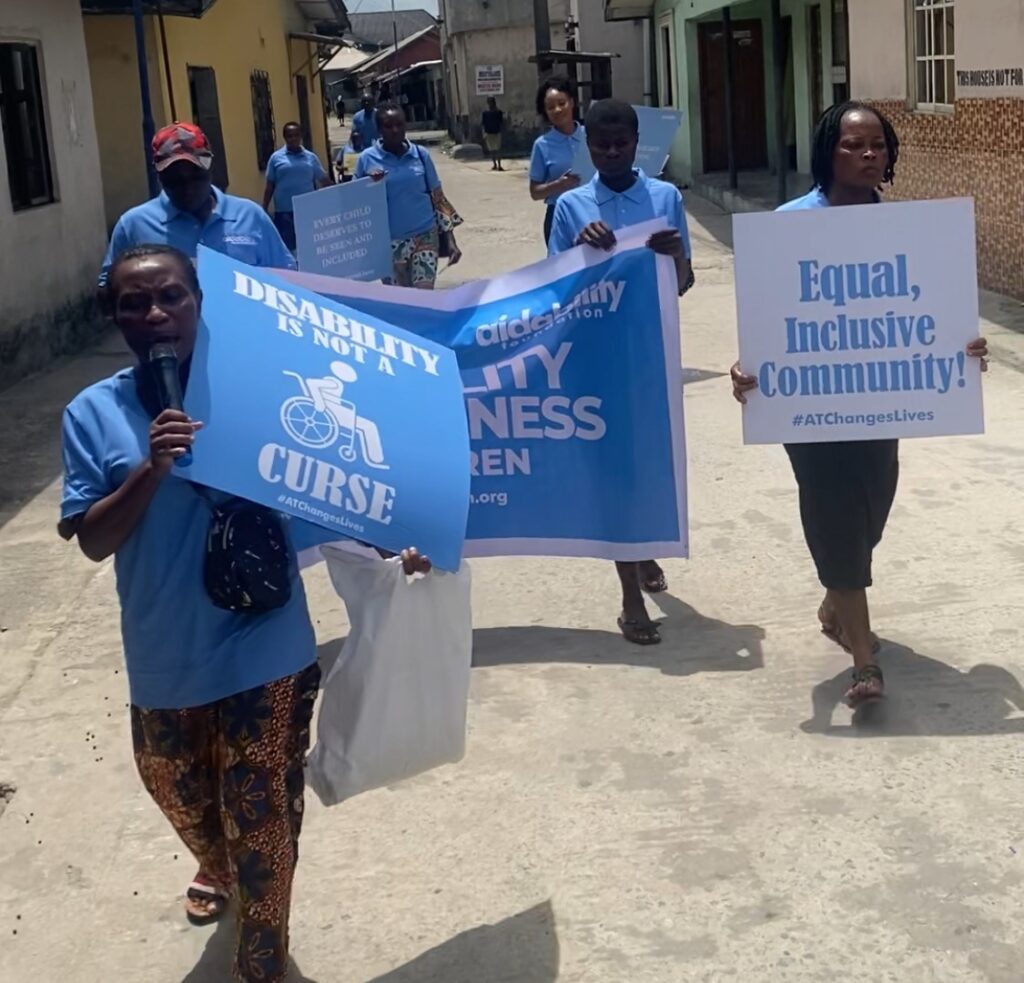Assistive technology means independence, opportunity, and inclusion.

What is Assistive Technology?
Assistive Technology (AT) refers to products, devices, and systems that enhance learning, working, and daily living for people with disabilities. AT empowers individuals to overcome barriers and participate more fully in society
Why Assistive Technology Matters

Despite policies aimed at supporting children with disabilities, significant gaps remain, especially in rural areas. Around 3.6 million children in Nigeria live with disabilities, and this number is expected to grow due to the lack of essential assistive technology. This gap makes daily activities and social participation extremely difficult for these children.
Without the right assistive products, many children become more dependent, isolated, and miss out on education and economic opportunities, which continues the cycle of marginalization and poverty. The high cost and distribution challenges of assistive technology mean that many children, especially in rural areas, do not get the help they need. This leaves only a small fraction with appropriate AT.

Assistive Technology Transforms Futures.
Ireso’s Story: Embracing Inclusion
Ireso’s life took a turn when a severe illness left him unable to walk at 10. He missed out on school and playing with friends. His mum had to bathe him and carry him whenever he needed to go out. But then, Ireso received a wheelchair. This new mobility means he can now attend school, play with his peers, and be part of his community again. His wheelchair has given him the freedom to move around and enjoy life, showing that everyone deserves to be included and active.
Assistive Technology Program
Access to assistive technology
AT is a fundamental right for everyone, regardless of location. In rural Nigeria, children with disabilities face significant challenges due to the limited availability of assistive technology. Our Assistive Technology program ensures children have the opportunity to attend school, enjoy playtime with friends, and actively participate in their communities.
Our Focus
- Mobility Solutions: Ensuring mobility for independence and social inclusion by providing wheelchairs.
- Vision Support: Providing children with the vision they need to succeed through eyeglasses.
- Auditory Devices: Opening up a world of sound for better communication and learning with hearing aids.
- Digital Learning Tools: Utilizing technology to aid learning and interaction with digital devices.
- Prosthetic Devices: Enhancing mobility and functional independence through prostheses.
Assistive Technology in Rural Nigeria
Overcoming Barriers
Years of neglect and inadequate policies have left rural Nigeria struggling with significant challenges in providing assistive technology:
- Assistive devices are scarce
- Healthcare facilities lack the necessary equipment.
- Qualified professionals are hard to find.
- Many children remain undiagnosed and untreated.
Bridging the Gap
Many children with disabilities in rural Nigeria don’t receive the assistive technology they need. The high cost and limited availability of these essential aids mean that:
- Many children drop out of school.
- They face social isolation and dependency.
- Girls, in particular, suffer more due to societal barriers and lack of resources.
Moving Forward
Making assistive technology more available is key for Nigeria’s growth. By closing these gaps, we can help every child live fully and be part of their community.
.
